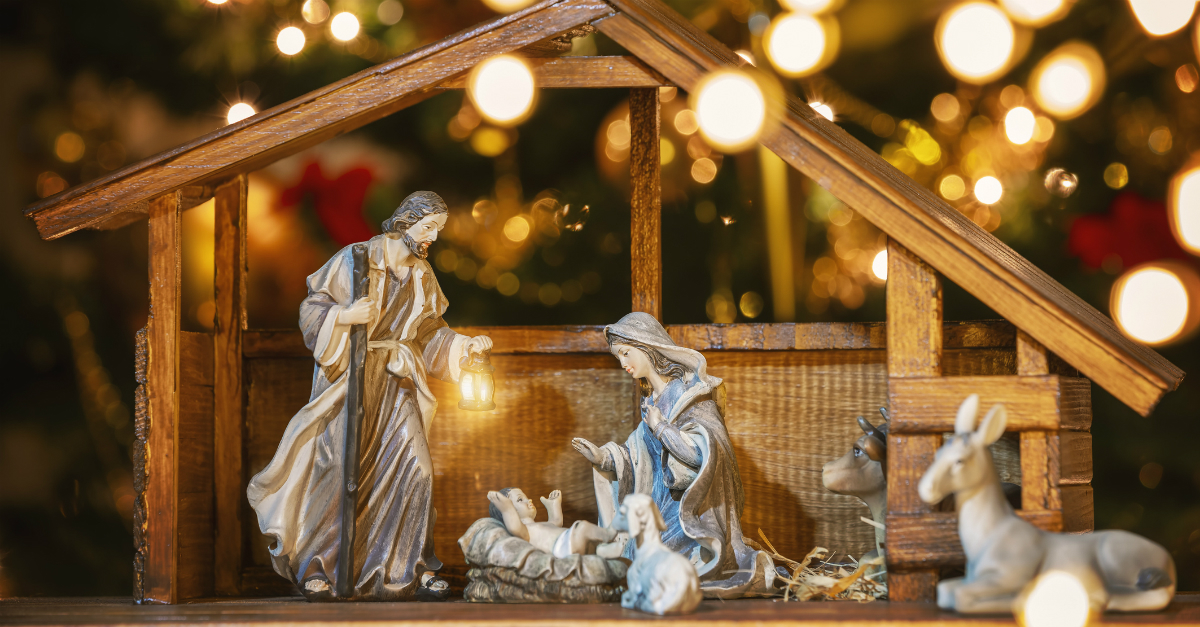
In the quiet anticipation of Christmas, a time of profound spiritual reflection and preparation unfolds within the Christian calendar. For many, it is a time marked by the lighting of candles, the joy of cherished traditions, and the vibrant chords of carols that herald the birth of a child in Bethlehem. This sacred season is known as Advent, a word that itself holds the promise of something extraordinary yet to come. But what is Advent, and why is it so significant in the lives of millions of Christians worldwide?
What Does Advent Mean?
The Advent season is a four-week period before Christmas that celebrates the anticipation and coming of Jesus Christ, the Messiah. The origin of "advent" is from the Latin word adventus, which simply translates as "coming" or "arrival." Not only is the Christian meaning for preparing and celebrating the coming of Jesus Christ, his birth at Christmas, but also to celebrate the new life when someone accepts Jesus Christ as their Savior, and lastly, the anticipation of Jesus returning again.
There are beautiful and rich traditions behind the celebration of Advent. Let's take a deeper look at the focus and themes of each week of Advent, and some of the traditions celebrated worldwide during the Advent season. May you find time to slow down this Christmas season, say "no" to the things that distract you from Jesus, and say "yes" to the gift that God wants you to experience.
The History and Origin of Advent
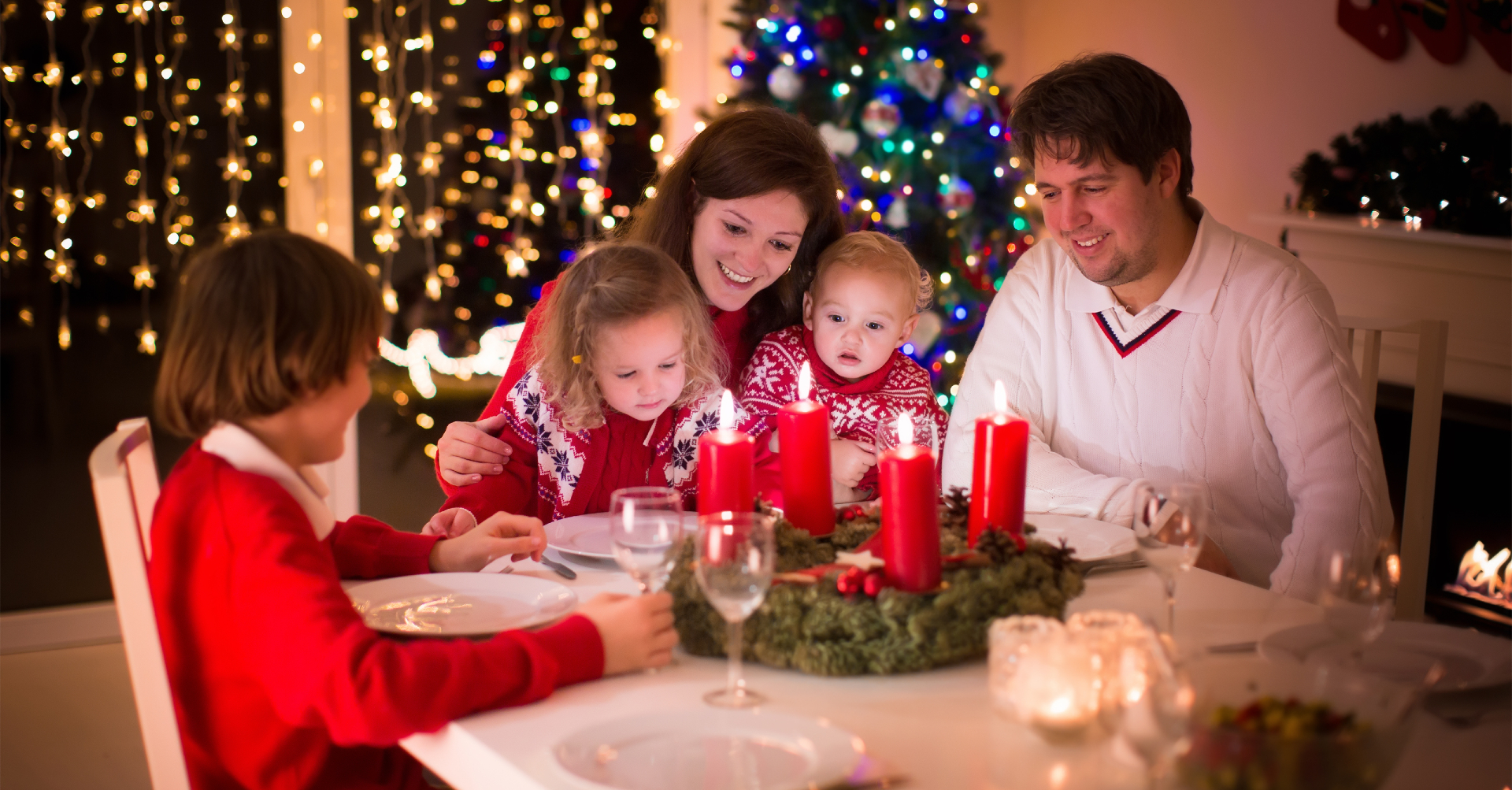
The history and origin of Advent trace back to the early centuries of the Christian faith, evolving over time to become the sacred season known and celebrated by millions of Christians today.
Advent, derived from the Latin word "adventus," meaning "coming" or "arrival," initially had different connotations in various Christian traditions. Its roots can be found in the early Christian Church, where the preparation for Christmas was a significant focus, but it wasn't always a uniform observance.
One of the earliest references to a period of preparation leading up to Christmas comes from the writings of St. Athanasius in the 4th century, although the practices and duration of this preparation varied between Eastern and Western branches of Christianity. While the Eastern Orthodox Church emphasized fasting and penance during this time, the Western Church, especially in Rome, laid the groundwork for what we now recognize as Advent.
By the late 5th century, Pope St. Gregory the Great played a pivotal role in shaping Advent as a distinct liturgical season, stretching over a period of five to six weeks, depending on the proximity of the Feast of St. Andrew (November 30) and Christmas. During this time, it became customary to focus on themes such as Christ's second coming, the Last Judgment, and the Nativity, connecting past, present, and future aspects of Christ's "coming."
The Advent wreath, which we will go more in-depth to later in this article, a central symbol of the Holiday season, originated in Germany in the 16th century. The wreath, usually made of evergreen branches, features four candles, one for each week of Advent, with a fifth candle, the Christ candle, lit on Christmas Eve. The candles represent themes of hope, love, joy, peace, and the anticipation of Christ's birth.
Today, Advent begins on the Sunday closest to November 30 (Sunday, December 1, 2024) and lasts until December 24, marking the period of preparation and expectation for the celebration of Jesus Christ's birth. It's a time for reflection, spiritual growth, and embracing the hope and promise of Christ's arrival, both in the historical event of his birth and in the future expectation of his return.
Who Celebrates Advent?
Advent is celebrated by Christians all over the world, including Roman Catholics, Protestants, Anglicans, Lutherans, and Orthodox Christians. Catholics follow a liturgical calendar for lighting the Advent wreath with specific Bible readings. Many evangelical Christians also use the Advent wreath and attend special church services, hymns, and devotional readings to prepare for Christmas. Anglicans and Lutherans share similar practices, incorporating liturgical elements such as the lighting of Advent candles, readings from the Book of Common Prayer, and singing traditional Advent hymns. Orthodox Christians observe a longer period of fasting and spiritual reflection.
While the specifics of Advent traditions may vary among Christian denominations, its central message remains universal: to prepare our hearts and minds for the coming of the Savior, the true reason for the Christmas season.
Looking for Advent readings to celebrate this season with family and friends? Download our FREE 25 Advent Readings for Christmas to prepare your heart for celebrating the Nativity of Christ!
Photo: GettyImages/FamVeld
The Four Weeks of Advent and Their Themes
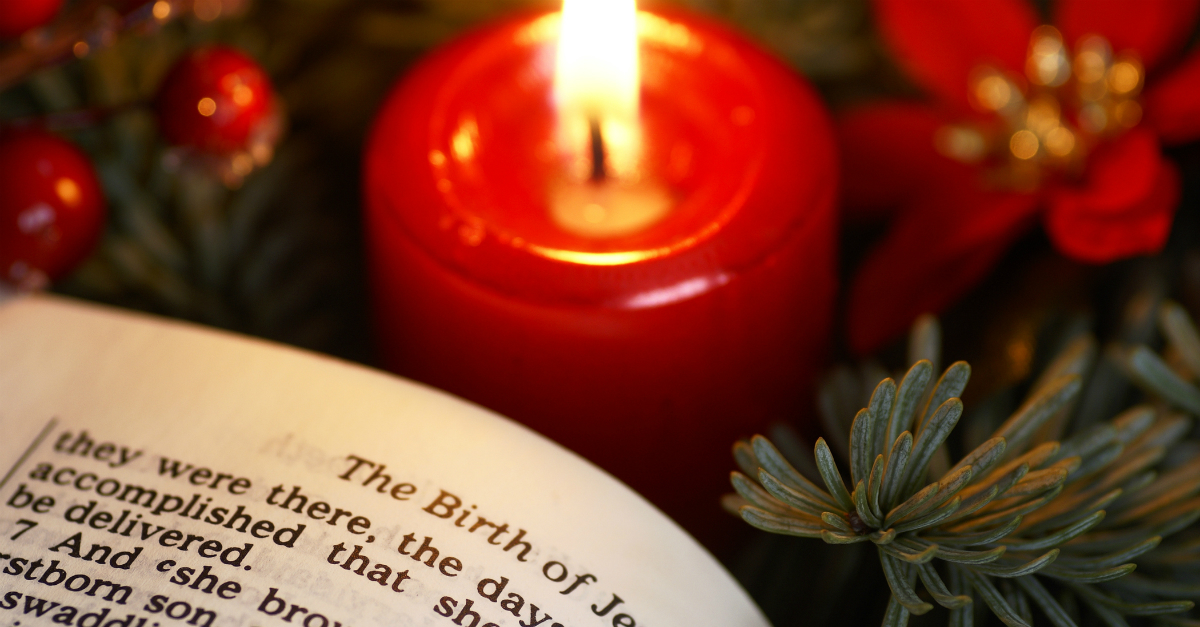
The four Sundays of Advent each have a specific theme or focus. The purpose of each theme is to spend time reflecting on the true meaning of the season - the life of Jesus Christ. The goal should be to come before God with a sincere heart and to worship Jesus Christ. To help observe these weeks, many churches led their congregation through Advent Readings. This tradition includes the reading of Scriptures that reflect each week's theme. Whether in a traditional church or at home with your family, these Bible verses are a great way to reflect on the promise of the Messiah both yesterday, today, and tomorrow.
First Sunday of Advent Week 1: Hope (or promise)
Isaiah 9:2, 6-7:
“The people walking in darkness have seen a great light; on those living in the land of deep darkness, a light has dawned...For to us a child is born, to us a son is given, and the government will be on his shoulders. And he will be called Wonderful Counselor, Mighty God, Everlasting Father, Prince of Peace. Of the greatness of his government and peace there will be no end. He will reign on David’s throne and over his kingdom, establishing and upholding it with justice and righteousness from that time on and forever. The zeal of the Lord Almighty will accomplish this.”
Second Sunday of Advent Week 2: Preparation (or waiting or prophecy)
Isaiah 40:3-5:
“A voice of one calling: ‘In the wilderness prepare the way for the Lord; make straight in the desert a highway for our God. Every valley shall be raised up, every mountain and hill made low; the rough ground shall become level, the rugged places a plain. And the glory of the Lord will be revealed, and all people will see it together. For the mouth of the Lord has spoken.’”
Third Sunday of Advent Week 3: Joy (or peace)
Matthew 2:10-11, “When they saw the star, they were overjoyed. On coming to the house, they saw the child with his mother Mary, and they bowed down and worshiped him. Then they opened their treasures and presented him with gifts of gold, frankincense and myrrh.”
Fourth Sunday of Advent Week 4: Love (or adoration)
John 3:16-19, “For God so loved the world that he gave his one and only Son, that whoever believes in him shall not perish but have eternal life. For God did not send his Son into the world to condemn the world, but to save the world through him. Whoever believes in him is not condemned, but whoever does not believe stands condemned already because they have not believed in the name of God’s one and only Son. This is the verdict: Light has come into the world, but people loved darkness instead of light because their deeds were evil.”
Related Resource: Hope: The Light Has Dawned - Isaiah 9 (Advent Week 1)
This first week of Advent focuses on the theme of hope—a hope made tangible through the arrival of Jesus. Why do we have hope? As believers, our hope isn’t anchored in fleeting desires or wishful thinking. Instead, it is rooted in God’s faithfulness. Did you know Jesus fulfilled more than 300 prophecies with His first coming—prophecies that were written centuries before His birth? These fulfilled prophecies assure us that God faithfully keeps his promises. And that means, just as Jesus came once, He will come again. This is our sure hope. This week’s So Much More meditation is one of the prophecies that Jesus fulfilled. It is from the book of Isaiah, written hundreds of years before Jesus’s birth. It speaks clearly of Jesus as the Light who shines in our darkness. I’m praying this meditation helps you rest in His unshakable hope today. If you like what you hear and want to make sure you have access to all the Advent meditations, subscribe to So Much More on Apple or Spotify so you never miss an episode!
Advent Calendars

Rooted in a tradition that spans centuries of church history, the modern version of the Advent calendar has existed since the nineteenth century. Emerging from a Protestant Christian context, Advent calendars carry an underlying spiritual message of anticipation and hope. By helping us remember and reflect on the coming of Jesus Christ, Advent calendars can be a valuable aid for Christian families. While many outside the Christian tradition enjoy their yearly countdown calendar (and its hidden treats), the meaning behind the Advent calendar remains steeped in religious themes. More than just a countdown, marking the days of Advent serves as a time of spiritual reflection and preparation.
Instead of strictly following the four-week Advent period, which can start anywhere from November 27 to December 3, an Advent calendar typically begins on December 1 and counts down the days until Christmas. Advent calendars now come in many forms, but the tradition began simply enough when German families in the mid-nineteenth century started counting the days until Christmas by tallying chalk marks on a door or wall. Variations of the countdown included lighting a candle or hanging a religious picture for each day leading up to Christmas Eve. Some families began making homemade Advent calendars to accompany their countdown, and by the early 1900s, a few publishing companies and newspapers had produced simple printed calendars.
There are many unique styles of Advent calendars. Some are overtly Christian, while others play to the holiday season's more secularized and generic aspects. Using a nativity-themed Advent calendar is an excellent choice for families who want to keep their focus on Christ during the Christmas season. Other calendars highlight Bible stories that tell the history of God’s people leading up to Jesus. The spiritual focus of these Advent calendars is built right into the countdown, often in the form of short written devotionals accompanying the calendar. These types of calendars are an easy way to help families start an edifying Advent tradition.
(excerpted from The History and Meaning of the Advent Calendar)
Advent Wreath and Candles
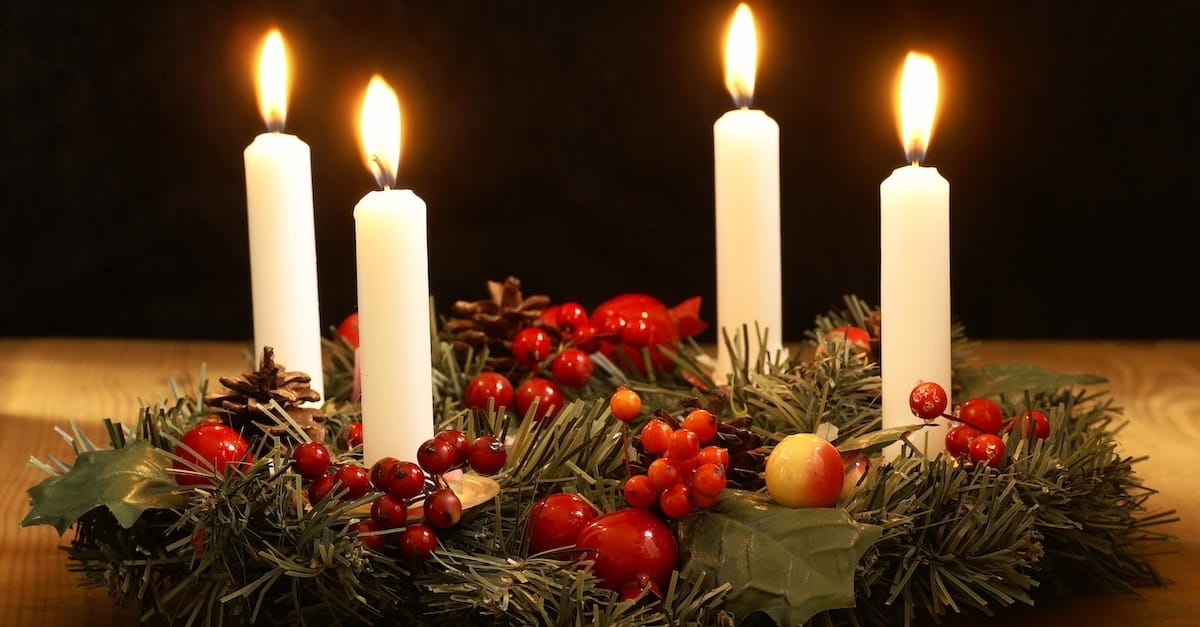
The Advent wreath first appeared in Germany in 1839. A Lutheran minister working at a mission for children created a wreath out of the wheel of a cart. He placed twenty small red candles and four large white candles inside the ring. The red candles were lit on weekdays and the four white candles were lit on Sundays.
Eventually, the Advent wreath was created out of evergreens, symbolizing everlasting life in the midst of winter and death as the evergreen is continuously green. The circle reminds us of God’s unending love and the eternal life He makes possible.
Advent candles shine brightly in the midst of darkness, symbolizing and reminding us that Jesus came as Light into our dark world. The candles are often set in a circular Advent wreath. In Scandinavia, Lutheran churches light a candle each day of December; by Christmas, they have twenty-four candles burning. Another Advent candle option is a single candle with twenty-four marks on the side--the candle is lit each day and allowed to melt down to the next day’s mark.
The most common Advent candle tradition, however, involves four candles around the wreath. A new candle is lit on each of the four Sundays before Christmas. Each candle represents something different, although traditions vary. Often, the first, second, and fourth candles are purple; the third candle is rose-colored. Sometimes all the candles are red; in other traditions, all four candles are blue or white. Occasionally, a fifth white candle is placed in the middle of the wreath and is lit on Christmas Day to celebrate Jesus’ birth.
The advent candles correspond to the themes of each week of advent. Families and church congregations begin lighting a candle on the fourth Sunday before Christmas, and they light another candle each subsequent Sunday.
- The first candle symbolizes hope and is called the "Prophet’s Candle." The prophets of the Old Testament, especially Isaiah, waited in hope for the Messiah’s arrival.
- The second candle represents faith and is called "Bethlehem’s Candle." Micah had foretold that the Messiah would be born in Bethlehem, which is also the birthplace of King David.
- The third candle symbolizes joy and is called the "Shepherd’s Candle." To the shepherd’s great joy, the angels announced that Jesus came for humble, unimportant people like them, too. In liturgy, the color rose signifies joy.
- The fourth candle represents peace and is called the "Angel’s Candle." The angels announced that Jesus came to bring peace--He came to bring people close to God and to each other again.
- The (optional) fifth candle represents light and purity and is called "Christ’s candle." It is placed in the middle and is lit on Christmas Day.
(excerpted from Understanding the Meaning, History, and Tradition of the Advent Wreath)
The Jesse Tree and Other Advent Traditions

The Jesse Tree
The Jesse Tree is a significant and symbolic element in the Christian Christmas tradition, particularly in some Western Christian denominations. It is used as a visual and thematic representation of the genealogy of Jesus Christ, tracing His lineage back to Jesse, the father of King David, as described in the Old Testament book of Isaiah.
The name "Jesse Tree" is derived from a prophecy found in the Book of Isaiah, specifically Isaiah 11:1-2 (NIV):
"A shoot will come up from the stump of Jesse; from his roots a Branch will bear fruit. The Spirit of the Lord will rest on him."
The Jesse Tree is typically depicted as a tree or branch, often drawn or displayed as an actual tree branch or as an ornamental tree design. The branches are decorated with various symbols, each representing a person or an event from the Old Testament that played a significant role in the lineage leading to the birth of Jesus. Each symbol is usually accompanied by a scripture passage or a brief explanation that tells the associated Old Testament story.
The Jesse Tree is another way of counting down to Christmas throughout Advent. Beginning on December 1st or the first Sunday of Advent, families or congregations often read a related scripture passage and hang an ornament or symbol on the Jesse Tree each day until December 25th. By Christmas, the Jesse Tree is fully adorned, and its decorations collectively tell the story of Jesus' ancestry and the anticipation of His birth.
This tradition serves as a reminder of the fulfillment of Old Testament prophecies and the continuity between the Old and New Testaments. It helps Christians to connect the stories and figures of the Old Testament with the birth of Jesus, emphasizing the role of these figures and events in the divine plan of salvation. The Jesse Tree tradition is a meaningful way for Christians to reflect on Christmas's true meaning and appreciate the historical and spiritual context of the birth of Jesus.
Posadas
A custom called “Posadas” is practiced in much of the Spanish-speaking world. “Posadas” means “shelter” or “lodging,” and it is done from December 16-24. A group of people re-enacts Joseph and Mary’s journey from Nazareth to Bethlehem. They plan a route and travel from house to house, asking for lodging. Each home plays the role of “innkeeper” and refuses to host them. At the last house, everyone is invited inside for prayer and refreshments.
Santa Lucia
Santa Lucia (or St. Lucy) is observed on the morning of December 13. The oldest daughter in the house is dressed in a white robe with a red sash, and she wears a wreath with lighted candles on her head. She carries a breakfast of coffee, gingerbread cookies, and saffron buns to her parent’s bedroom. The younger daughters follow the eldest, carrying a single candle. The “star boys” brothers wear tall, pointed hats.
Advent Hymns
These are a few of the suggested hymns to read that focus on the theme of each Advent week. Whether sung at church or at home as a family, these traditional hymns are a beautiful way to focus on the gift of Jesus Christ.
Week 1: Hope - Come, Thou Long Expected Jesus (Charles Wesley)
Come, thou long expected Jesus,
born to set thy people free;
from our fears and sins release us,
let us find our rest in thee.
Israel's strength and consolation,
hope of all the earth thou art;
dear desire of every nation,
joy of every longing heart.
Born thy people to deliver,
born a child and yet a King,
born to reign in us forever,
now thy gracious kingdom bring.
By thine own eternal spirit
rule in all our hearts alone;
by thine all sufficient merit,
raise us to thy glorious throne.
Week 2: Preparation - O Come, O Come Emmanuel (John Mason Neale)
O come, O come, Immanuel,
and ransom captive Israel
that mourns in lonely exile here
until the Son of God appear.
Rejoice! Rejoice! Immanuel
shall come to you, O Israel.
(Read the full lyrics and listen to O Come, O Come Emmanuel.)
Week 3: Joy - Joy to the World (Isaac Watts)
Joy to the world, the Lord is come!
Let Earth receive her King!
Let every heart prepare Him room,
and heaven and nature sing,
and heaven and nature sing,
and heaven, and heaven and nature sing.
Joy to the earth, the Savior reigns!
Let men their songs employ,
while fields and floods, rocks, hills, and plains
repeat the sounding joy,
repeat the sounding joy,
repeat, repeat the sounding joy.
(Read the full lyrics and listen to Joy to the Word with videos.)
Week 4: Love - Hark the Herald Angels Sing (Charles Wesley)
Hark the herald angels sing
"Glory to the newborn King!
Peace on earth and mercy mild
God and sinners reconciled"
Joyful, all ye nations rise
Join the triumph of the skies
With the angelic host proclaim:
"Christ is born in Bethlehem"
Hark! The herald angels sing
"Glory to the newborn King!"
(Read the full lyrics and listen to Hard the Herald Angels Sing with videos.)
Prayers for Advent
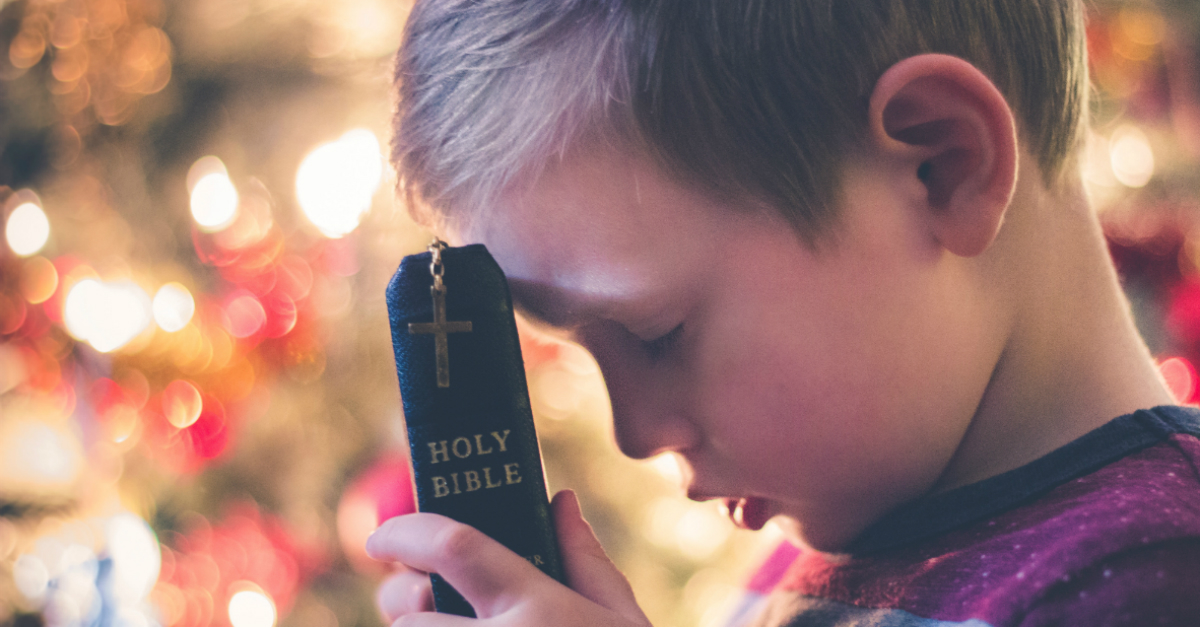
Through prayer, we can ask God to prepare our hearts the way He prepared all of history to receive the gift of His Son. Ask the Father to use this time during Advent to cut away the distractions and make your life a place of warmth and openness. We've compiled these Advent prayers from across our archives to help you make sure there's "room at the inn" of your heart this year.
Advent Prayer #1
Lord, help us stop comparing our Advent season to any other family because we know you have ordained us for this family, at this table, and you have “good works prepared in advance for us to do” that are specific for us. We find meaning and joy in whatever life looks like because we trust Jesus for our lives. Even more, when we’re seated with Christ, we worship you and take our eyes off ourselves. Because we’re experiencing intimacy with Jesus, loneliness and disconnection fade and allow us to focus on blessing others.
We can stop obsessing over ourselves and consider how we might serve and love best. When we’re seated with Christ during Advent, we realize that you have sovereignly placed us right where we are for a reason this holiday season, and we can trust that you know what you’re doing. Finally, when we’re seated with Christ, we can reiterate to our heart that at all times, your peace, power, hope, and love are available to us in endless supply. As we take our seat with Jesus, we pray our holiday tables shimmer with your glory and that any joy and hope we’ve lost returns. May we overflow with spiritual gifts as we sit with you, Jesus.
~Edited from Heather Holleman's “The Greatest Seat at the Holiday Table”
Advent Prayer #2
Lord, how wrong I have been to act as if Christ had never been born. As if He didn’t perform miracles. As if He didn’t take my every tear, my daily worries, my sin and insecurities on that cross. As if the tomb wasn’t empty and the throne wasn’t full of His presence and grace. It’s that grace that gives meaning and power to your promises. I know that your Word prevails even when our world turns black. I trust that your healing comes in different forms, stages and ways.
I believe that you promised to provide all we need. Seeking you doesn’t require physical vision, complete health or a life free of troubles. But instead, a heart full of devotion and obedience, which I offer you. No matter how many Advent seasons sweep by, Lord, your reminders remain the same. Each tear we cry has a purpose. Each trying stage has a divine reason. And in your capable hands, each icy rain of adversity is transformed into the warmth and sparkle of your grace.
~Edited from Janet Perez Eckles' “3 Reasons to Dry Your Tears of Sadness at Christmas”
Advent Prayer #3
Lord, in a season when every heart should be happy and light, many of us are struggling with the heaviness of life—burdens that steal the joy right out of our stockings. Tragedy arrives as innocent victims suffer, and an inner voice whispers, “Be afraid!” We need your peace, Jesus. We confess that our hearts are too often filled with wonder of a different kind: wondering when the bills will be paid, when the terror will stop, when rest will come. Will it ever? Is the message still true? In a world where worry, not peace, prevails, stir up that good news again.
This Advent, make it real in our hearts. Never have we needed Your joy and peace more than now. Thank You for the gift of Jesus, our Immanuel, the Word made flesh. We not only need Your peace and joy; Lord, we crave it. You’ve promised rest for the weary, victory for the battle-scarred, peace for the anxious, and acceptance for the broken hearted - not just at Advent, but every day of every year. Your name is still called “Wonderful,” “Counselor,” “The Mighty God,” “The Everlasting Father,” and “The Prince of Peace.” We know that peace on earth can only come when hearts find peace with You. You are still our Joy. You are still our Peace. You are no longer a babe in the manger. You are Lord of lords and King of kings. And we still celebrate You as Lord—this Christmas and always.
~Edited from Rebecca Barlow Jordan's “A Prayer for Peace & Joy at Christmas”
Advent Prayer #4
This Christmas, Lord, come to the manger of my heart.
Fill me with Your presence from the very start.
As I prepare for the holidays and gifts to be given,
Remind me of the gift You gave when You sent Your Son from Heaven.
The first Christmas gift, it was the greatest gift ever.
You came as a baby born in a manger.
Wrapped like the gifts I find under my tree,
Waiting to be opened, to reveal Your love to me.
Restore to me the wonder that came with Jesus' birth,
when He left the riches of Heaven and wrapped Himself in rags of earth.
Immanuel, God with us, Your presence came that night.
And angels announced, "Into your darkness, God brings His Light."
"Do not be afraid," they said, to shepherds in the field.
Speak to my heart today, Lord, and help me to yield.
Make me like those shepherd boys, obedient to Your call.
Setting distractions and worries aside, to You I surrender them all.
Surround me with Your presence, Lord, I long to hear Your voice.
Clear my mind of countless concerns and all the holiday noise.
Slow me down this Christmas, let me not be in a rush.
In the midst of parties and planning, I want to feel Your hush.
This Christmas, Jesus, come to the manger of my heart.
Invade my soul like Bethlehem, bringing peace to every part.
Dwell within and around me, as I unwrap Your presence each day.
Keep me close to You, Lord. It's in Your wonderful Name I pray.
~Renee Swope, “The Manger of My Heart” from Proverbs 31 Ministries